Chester Zoo is home to one of the largest collections of carnivorous plants in the UK. Their National Plant Collection of Nepenthes holds over 2500 individual plants from 130 species and countless hybrids, many of which are facing imminent extinction in the wild.
Last week I visited Chester Zoo for a behind-the-scenes tour of their three glasshouses, which are not open to the public, with Lead Horticulturist Paul Leach. He’s been growing Nepenthes at the zoo for over 20 years and has been responsible for the National Collection since Chester first acquired it from Derek Clavell-Bate in 2011.
The decision to buy the collection - which already contained a number of highly endangered species - can be traced right back to the zoo’s mission statement: ‘preventing extinction’. The collection not only highlights the threats posed by habitat destruction and poaching, but has also enabled the zoo to make invaluable contributions to vital conservation projects. Paul explained: “We have already sent cuttings of N. kampotiana back to Thailand to help with a re-population project, and there are other projects in the pipeline for other species.”
Today the collection is spread across three glasshouses, each representing a different environment: lowland, intermediate, and highland. My tour began in the highland glasshouse, the largest of the three.
Click on any photo to zoom in. Use arrow keys or swipe to navigate.
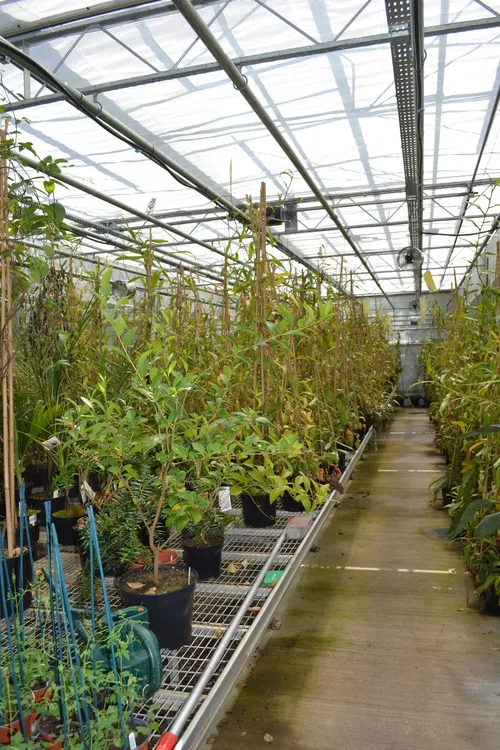 01. The highland Nepenthes glasshouse
01. The highland Nepenthes glasshouse .xK1g310G_Z29lMmt.webp) 02. Nepenthes x Tiveyi (N. veitchii 'striped' x N. maxima 'superba')
02. Nepenthes x Tiveyi (N. veitchii 'striped' x N. maxima 'superba') 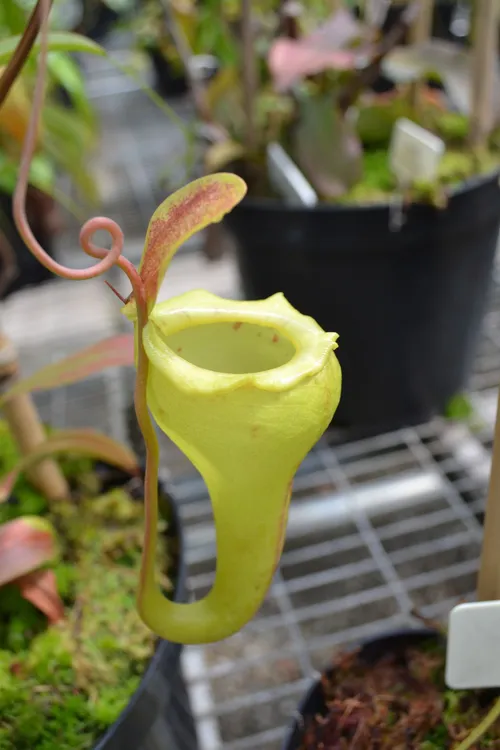 03. Nepenthes flava
03. Nepenthes flava .Con2ORIu_1zIBPR.webp) 04. Nepenthes spectabilis (Sinabung)
04. Nepenthes spectabilis (Sinabung) 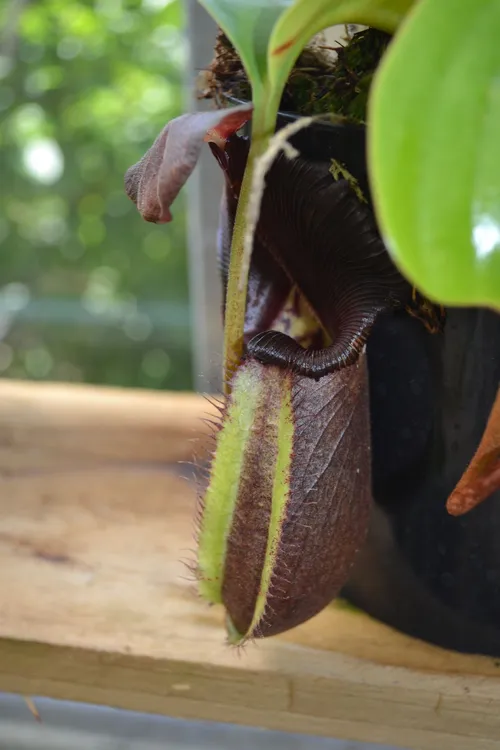 05. Nepenthes truncata 'black'
05. Nepenthes truncata 'black' 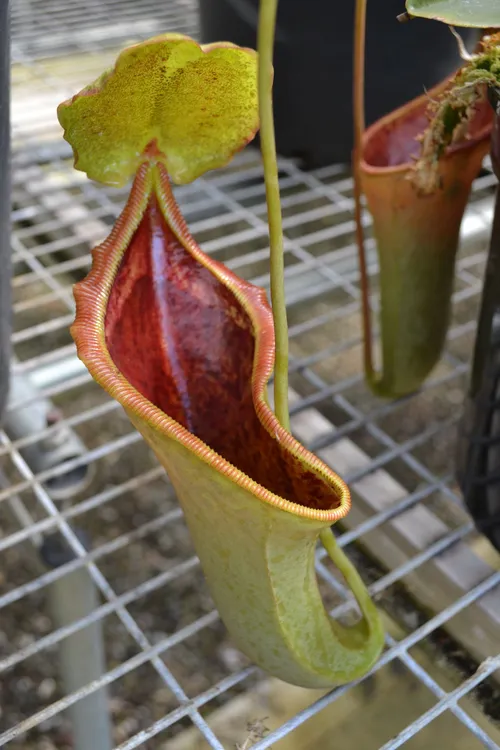 06. Nepenthes lowii x campanulata
06. Nepenthes lowii x campanulata .BXFkw3F-_QDWoC.webp) 07. Nepenthes 'Lady Pauline' (N. talangensis x maxima)
07. Nepenthes 'Lady Pauline' (N. talangensis x maxima)  08. Nepenthes burbidgeae - I really love the red to cream fading of the peristome on this species
08. Nepenthes burbidgeae - I really love the red to cream fading of the peristome on this species 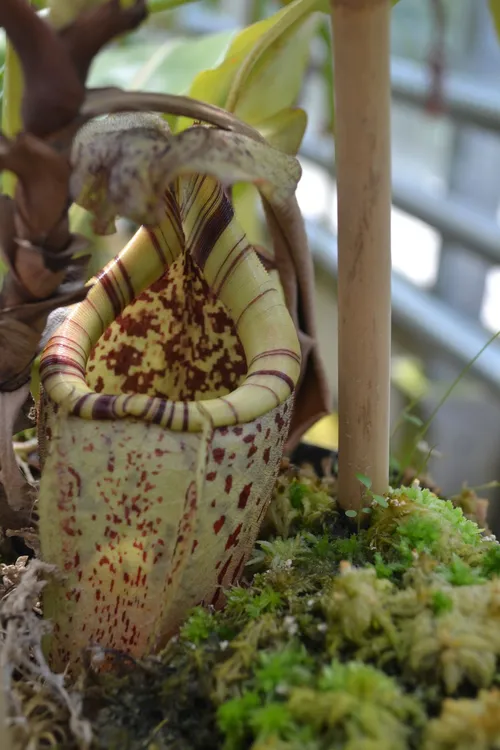 09. A cream-coloured pitcher on Nepenthes burbidgeae
09. A cream-coloured pitcher on Nepenthes burbidgeae  10. Nepenthes ventricosa 'porcelain'
10. Nepenthes ventricosa 'porcelain' 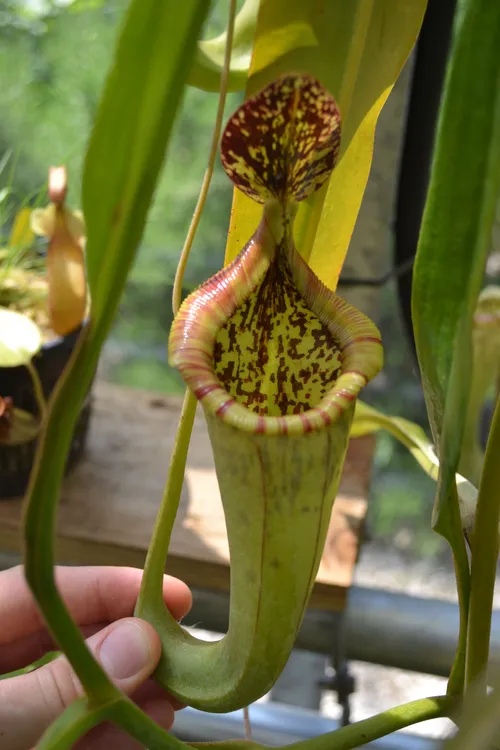 11. Nepenthes maxima 'dark' x trusmadiensis
11. Nepenthes maxima 'dark' x trusmadiensis 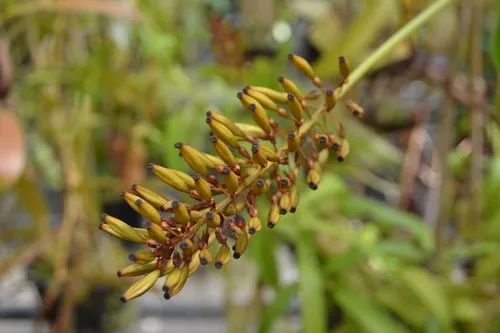 12. Dozens of the of plants were in flower or setting seed
12. Dozens of the of plants were in flower or setting seed 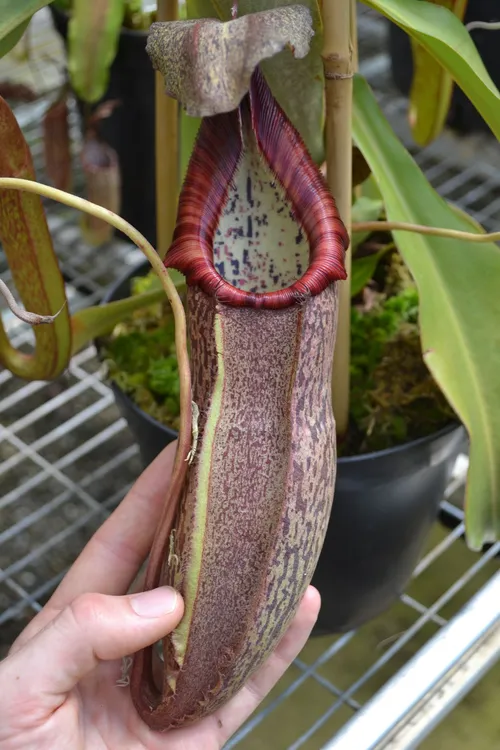 13. Nepenthes spathulata x spectabilis
13. Nepenthes spathulata x spectabilis  14. Nepenthes ventricosa x inermis was a prolific producer of pitchers, as you can see from this bushy plant
14. Nepenthes ventricosa x inermis was a prolific producer of pitchers, as you can see from this bushy plant 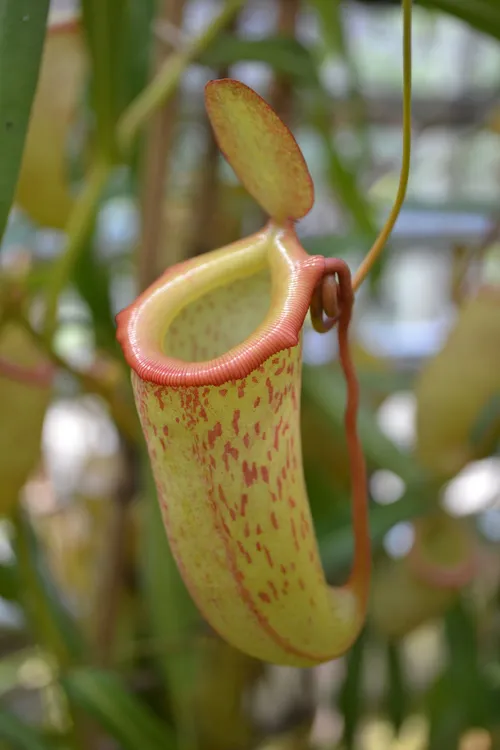 15. Nepenthes ventricosa x inermis pitcher
15. Nepenthes ventricosa x inermis pitcher  16. Nepenthes veitchii x lowii, a fantastic hybrid
16. Nepenthes veitchii x lowii, a fantastic hybrid  17. Nepenthes fusca
17. Nepenthes fusca .uzQTM551_ZjvTwc.webp) 18. Nepenthes 'Emmarene' (N. khasiana x ventricosa)
18. Nepenthes 'Emmarene' (N. khasiana x ventricosa) 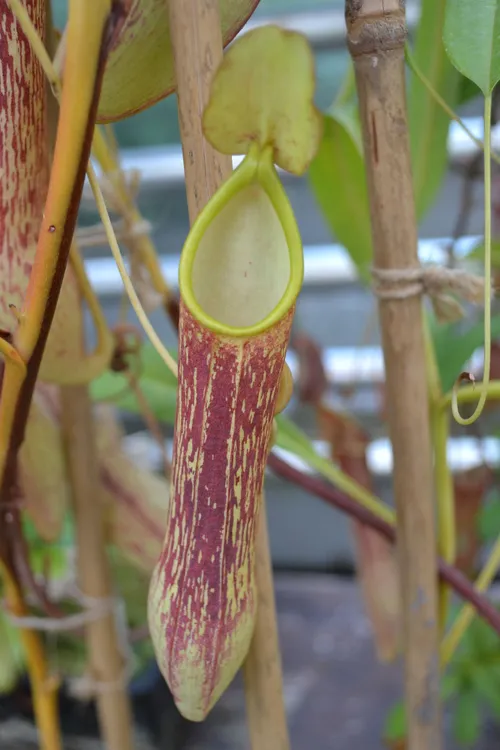 19. Nepenthes copelandii
19. Nepenthes copelandii 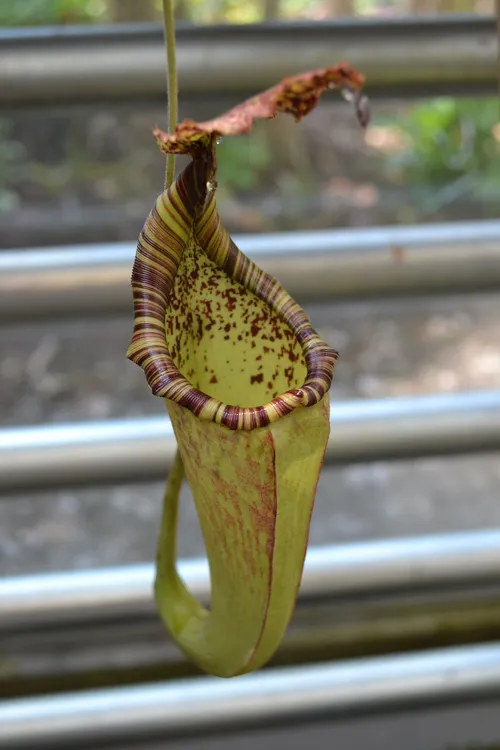 20. Nepenthes maxima upper pitcher
20. Nepenthes maxima upper pitcher .Bkp_YWIf_Z2c444l.webp) 21. Nepenthes 'Judith Finn' (N. veitchii x spathulata)
21. Nepenthes 'Judith Finn' (N. veitchii x spathulata)  22. One of my favourite species, Nepenthes veitchii. This particular specimen had a bright red peristome and was particularly hairy
22. One of my favourite species, Nepenthes veitchii. This particular specimen had a bright red peristome and was particularly hairy  23. The whole plant was covered in thick bristly hair
23. The whole plant was covered in thick bristly hair 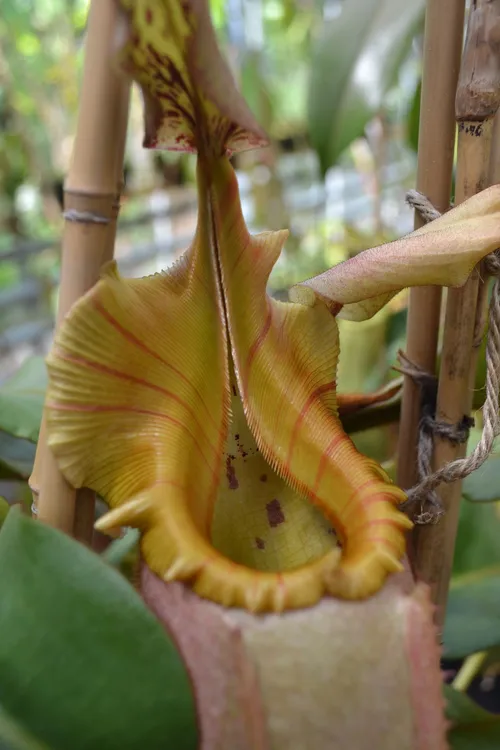 24. Close by, a Nepenthes veitchii 'golden peristome'
24. Close by, a Nepenthes veitchii 'golden peristome'  25. Close up of the N. veitchii 'golden peristome'
25. Close up of the N. veitchii 'golden peristome' 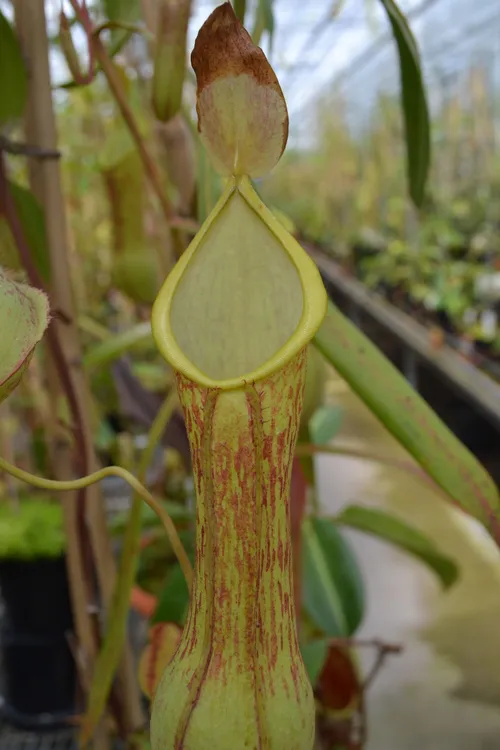 26. Nepenthes alata
26. Nepenthes alata  27. Another Nepenthes maxima 'dark' x trusmadiensis, this one with a wider, more lowii-esque mouth
27. Another Nepenthes maxima 'dark' x trusmadiensis, this one with a wider, more lowii-esque mouth .C9EInvLC_DcL99.webp) 28. Nepenthes burbidgeae x fallax (N. stenophylla maybe)
28. Nepenthes burbidgeae x fallax (N. stenophylla maybe) 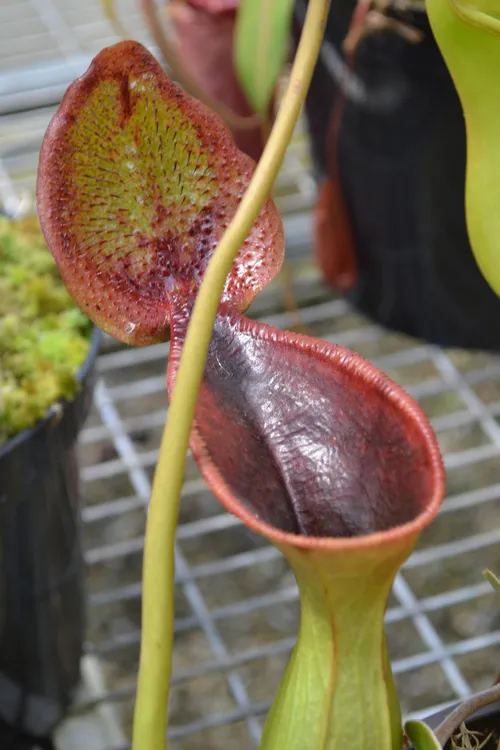 29. The stunning upper pitchers on Nepenthes lowii
29. The stunning upper pitchers on Nepenthes lowii  30. Close up of the lid bristles on Nepenthes lowii
30. Close up of the lid bristles on Nepenthes lowii 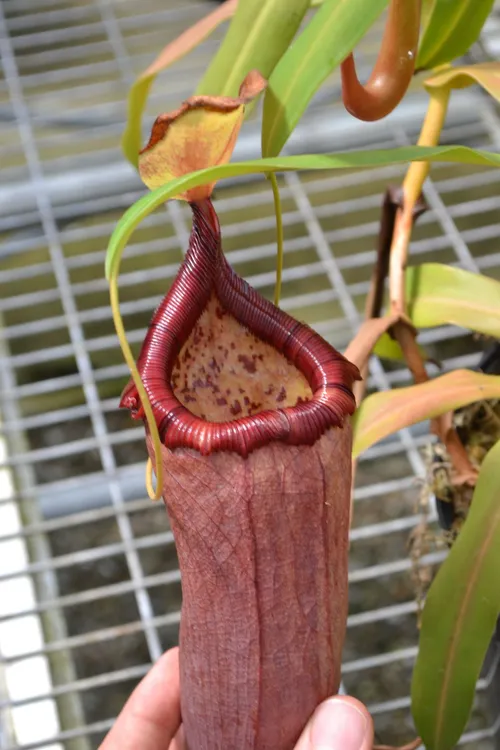 31. Nepenthes ventricosa x ovata
31. Nepenthes ventricosa x ovata .0BEoLs7o_wjCfd.webp) 32. A huge and lovely N. carunculata var robusta (aka N. bongso)
32. A huge and lovely N. carunculata var robusta (aka N. bongso) 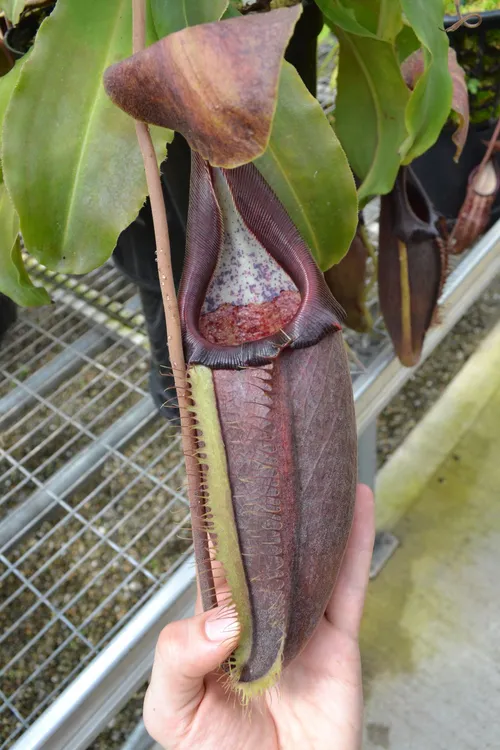 33. Nepenthes bongso with my hand for scale
33. Nepenthes bongso with my hand for scale  34. Lovely little pitchers on this plant - I couldn't see label sadly
34. Lovely little pitchers on this plant - I couldn't see label sadly  35. Nepenthes glandulifera
35. Nepenthes glandulifera 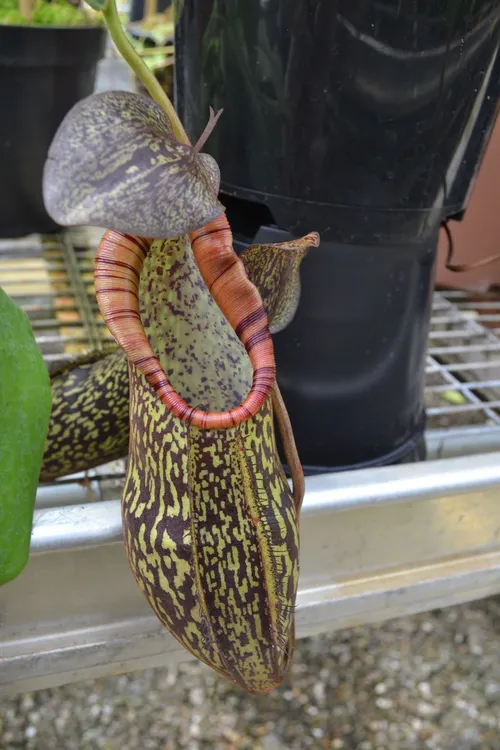 36. Nepenthes rigidifolia x spectabilis maybe
36. Nepenthes rigidifolia x spectabilis maybe  37. Nepenthes singalana
37. Nepenthes singalana 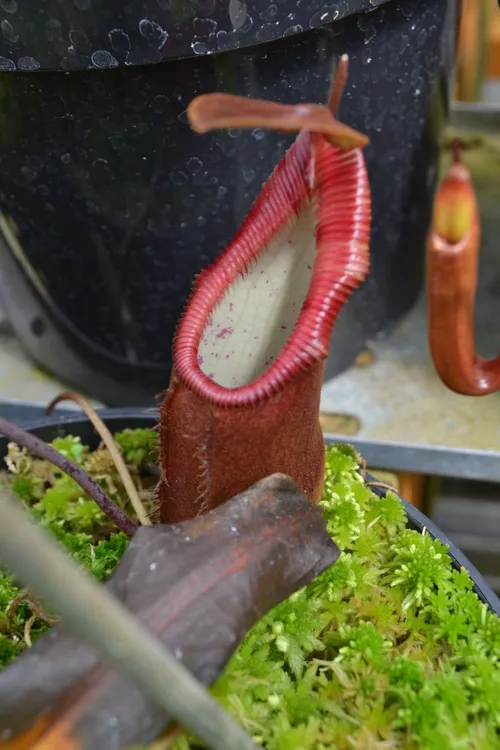 38. Nepenthes dietas
38. Nepenthes dietas 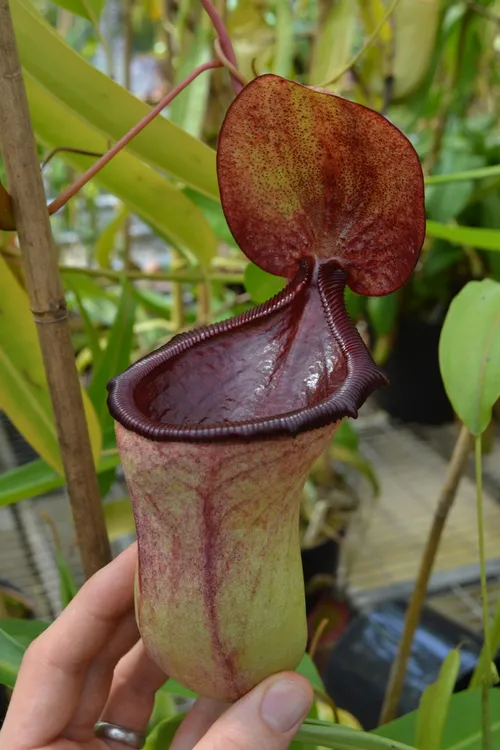 39. Nepenthes ventricosa x ephippiata
39. Nepenthes ventricosa x ephippiata 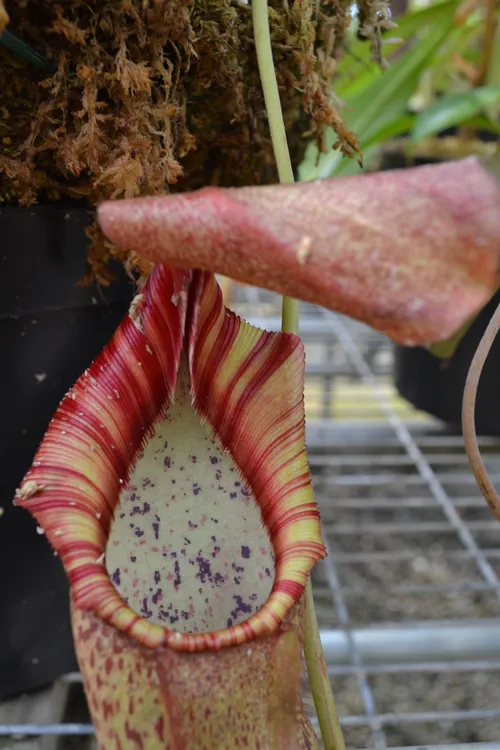 40. An unknown hybrid involving N. spathulata
40. An unknown hybrid involving N. spathulata  41. Nepenthes mikeii
41. Nepenthes mikeii 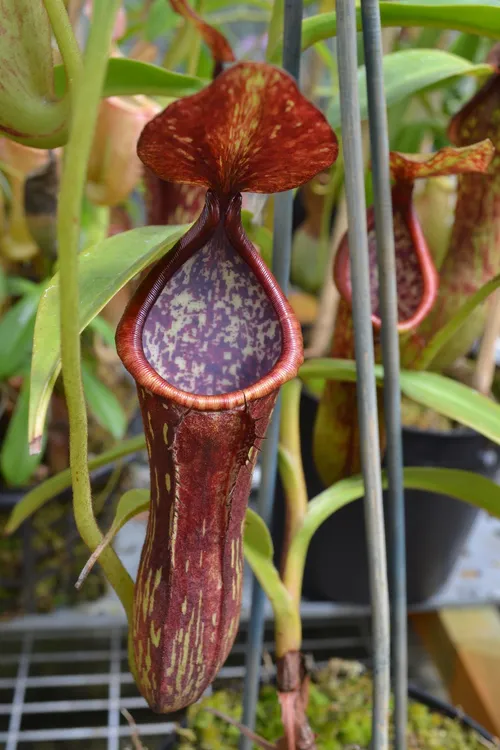 42. Nepenthes petiolata
42. Nepenthes petiolata  43. A really nice hybrid I had never seen before - Nepenthes aristolochoides x hamata. I think this cross was by Simon Lumb. Great shape
43. A really nice hybrid I had never seen before - Nepenthes aristolochoides x hamata. I think this cross was by Simon Lumb. Great shape  44. Glossy black toothy peristome on Nepenthes aristolochoides x hamata
44. Glossy black toothy peristome on Nepenthes aristolochoides x hamata  45. Nepenthes adrianii lower pitcher
45. Nepenthes adrianii lower pitcher  46. Nepenthes adrianii upper pitcher
46. Nepenthes adrianii upper pitcher 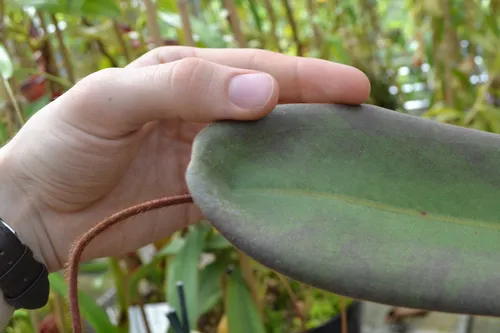 47. The distinctive peltate leaves of Nepenthes peltata
47. The distinctive peltate leaves of Nepenthes peltata .bhF6QVuD_1gcfVm.webp) 48. Nepenthes tobaica (Dolok Sanggul)
48. Nepenthes tobaica (Dolok Sanggul) 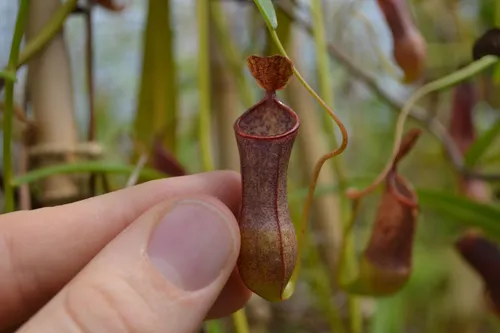 49. Nepenthes tobaica again, with my hand for scale
49. Nepenthes tobaica again, with my hand for scale  50. Nepenthes glabrata - a nice miniature species
50. Nepenthes glabrata - a nice miniature species 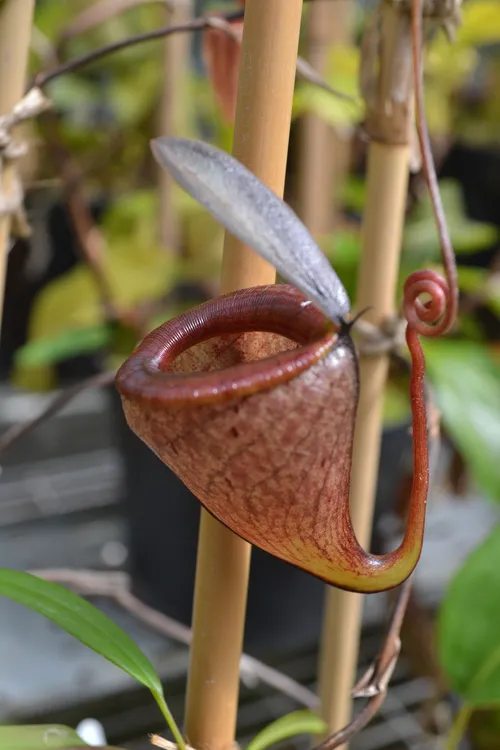 51. Nepenthes tenuis
51. Nepenthes tenuis 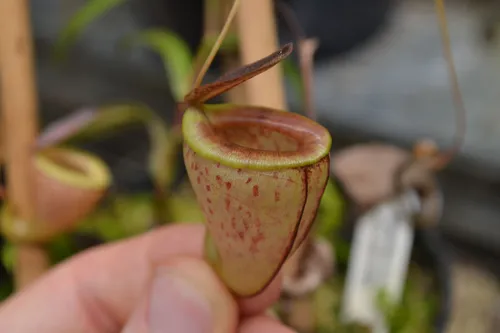 52. Seeing all these smaller species reminded me of a conversation I had with Andy Smith - we both felt that many miniature species like N. tenuis are underused in crosses. Would love to see more!
52. Seeing all these smaller species reminded me of a conversation I had with Andy Smith - we both felt that many miniature species like N. tenuis are underused in crosses. Would love to see more! 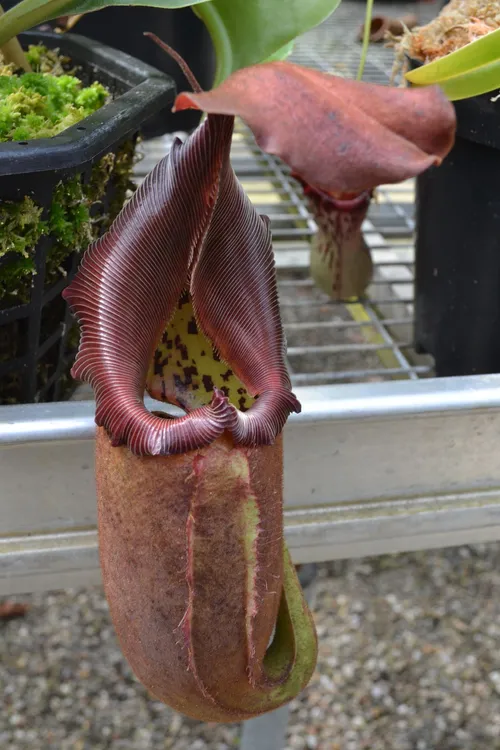 53. Nepenthes robcantleyi
53. Nepenthes robcantleyi .Cd2RVJrV_1zWH9E.webp) 54. The distinctive Nepenthes x briggsiana (N. lowii x ventricosa)
54. The distinctive Nepenthes x briggsiana (N. lowii x ventricosa)  55. This N. peltata didn't currently have any pitchers, but here you can see the red underside of the leaves and hairy tendril
55. This N. peltata didn't currently have any pitchers, but here you can see the red underside of the leaves and hairy tendril  56. Nepenthes spathulata
56. Nepenthes spathulata 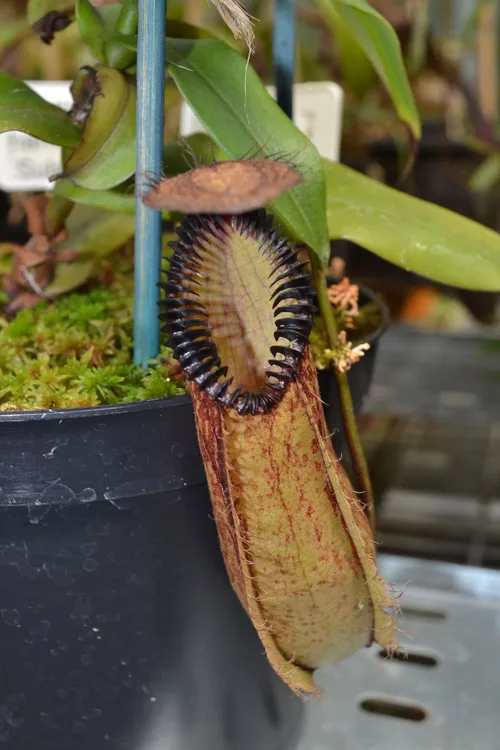 57. The fearsome Nepenthes hamata - this was labeled as Wistuba clone 1
57. The fearsome Nepenthes hamata - this was labeled as Wistuba clone 1 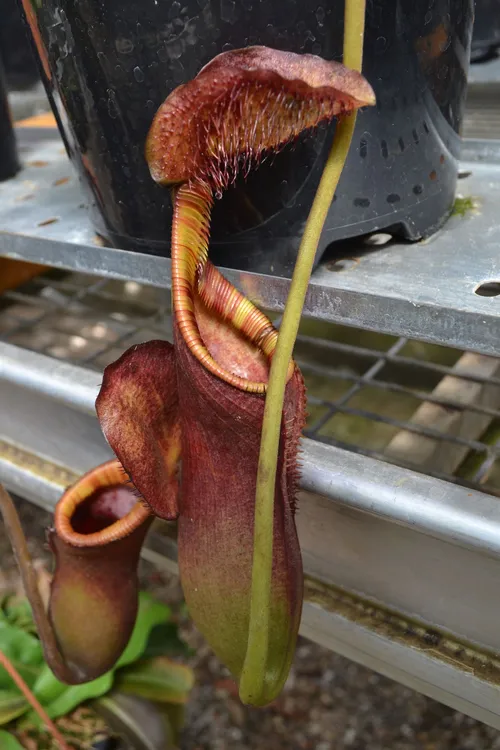 58. Nepenthes ephippiata lower pitcher. Magnificent!
58. Nepenthes ephippiata lower pitcher. Magnificent!  59. Close up of Nepenthes ephippiata lid bristles and lovely orange peristome
59. Close up of Nepenthes ephippiata lid bristles and lovely orange peristome 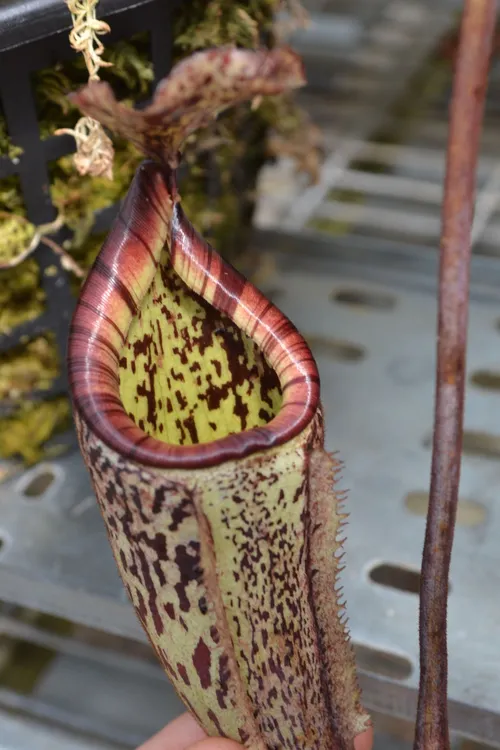 60. Another Nepenthes burbidgeae, this one a bit larger
60. Another Nepenthes burbidgeae, this one a bit larger 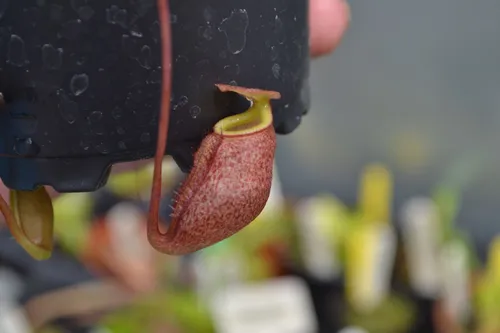 61. Nepenthes leonardoi
61. Nepenthes leonardoi  62. The nursery for smaller plants. There were some really nice seedlings here including N. attenboroughii, N. leonardoi, N. lamii, and N. pitopangii
62. The nursery for smaller plants. There were some really nice seedlings here including N. attenboroughii, N. leonardoi, N. lamii, and N. pitopangii 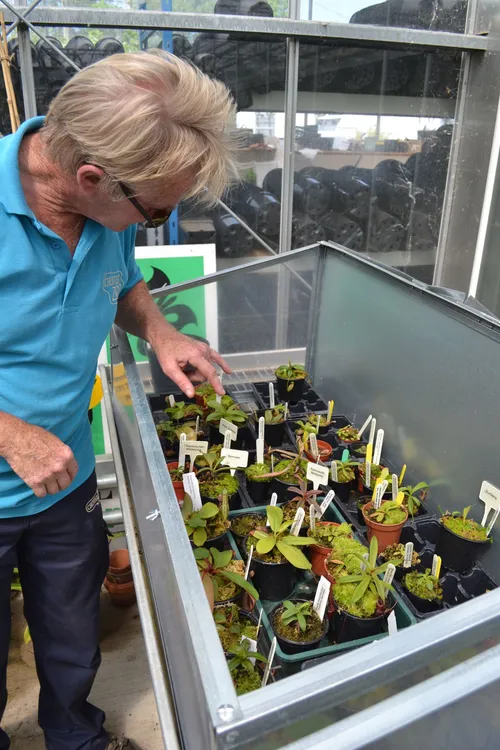 63. Paul looking over the plants in the highland nursery
63. Paul looking over the plants in the highland nursery The highland glasshouse is controlled by an automated system which manages the heaters, roof vents, and lights. The environment is kept at around 24°C during the day and 14°C at night, in contrast to the lowland house which is kept at a constant 30°C. Watering with rainwater is done by hand every day, but supported in the highland and intermediate glasshouses with an overhead misting system.
One of the things which struck me while exploring the glasshouse was the sheer size of many of the plants. Paul explained that he refrains from pruning scrambling vines and instead allows the plants to grow naturally, staking larger specimens with canes to support them. As well as making great use of the glasshouse’s height, it also means that the contrasting morphology of many species’ lower and upper pitchers was displayed to full effect. Cuttings are typically only taken as a way to build up numbers of rarer species as a safeguard.
Most of Chester’s Nepenthes are grown in a peat-free mixture, but Paul is always open to trying new mixtures. “I normally use a mix of New Zealand sterilised moss with perhaps moss peat or bark, perlite, or silver sand maybe added at times. I always need vast quantities for the collection!”
When it comes to fertilization, Paul is a fan of experimentation. He’s tried numerous different approaches including the famous coffee method, much to the confusion of the zoo’s catering team. Today, however, he typically relies on Osmocote: he drops one or two pellets into a single pitcher on each plant per month. The plants certainly seem to appreciate being fed like this, with most of the larger plants holding dozens of colourful pitchers at once.
Next, we entered the intermediate and lowland glasshouses.
Click on any photo to zoom in. Use arrow keys or swipe to navigate.
 01. Stepping into the considerably warmer intermediate and lowland areas, the first plant I spotted was Nepenthes bicalcarata, with distinctive fangs and thickly coiled tendril
01. Stepping into the considerably warmer intermediate and lowland areas, the first plant I spotted was Nepenthes bicalcarata, with distinctive fangs and thickly coiled tendril  02. This N. bicalcarata upper pitcher was particularly stunning, and as you can see was dripping with sweet nectar
02. This N. bicalcarata upper pitcher was particularly stunning, and as you can see was dripping with sweet nectar 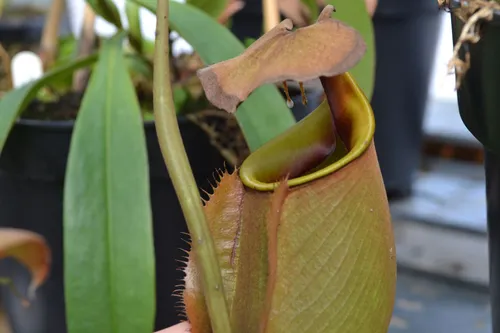 03. An older lower pitcher on Nepenthes bicalcarata
03. An older lower pitcher on Nepenthes bicalcarata 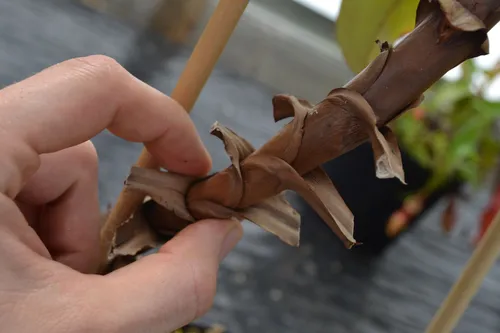 04. The huge N. bicalcarata had one of the thickest, woodiest stems I think I've ever seen
04. The huge N. bicalcarata had one of the thickest, woodiest stems I think I've ever seen 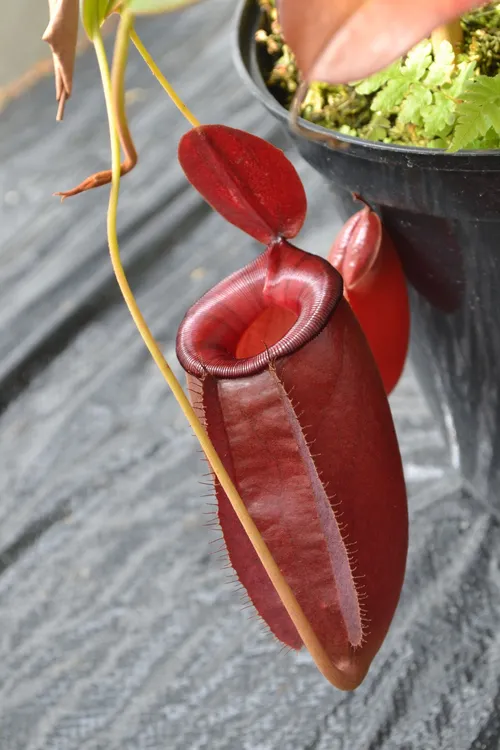 05. At first I thought this was a huge N. 'Bloody Mary', the Borneo Exotics cross between N. ampullaria and N. ventricosa, but it was actually N. ampullaria x sibuyanensis, which explains the size!
05. At first I thought this was a huge N. 'Bloody Mary', the Borneo Exotics cross between N. ampullaria and N. ventricosa, but it was actually N. ampullaria x sibuyanensis, which explains the size! 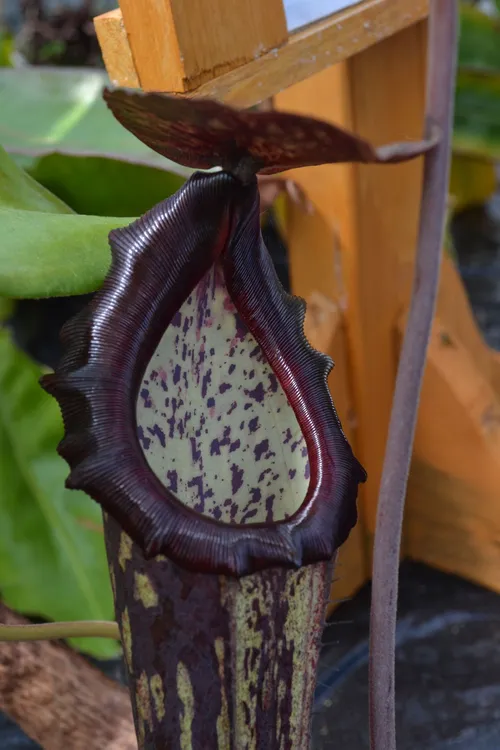 06. A particularly lovely Nepenthes boschiana from Ganung Sakumpang
06. A particularly lovely Nepenthes boschiana from Ganung Sakumpang 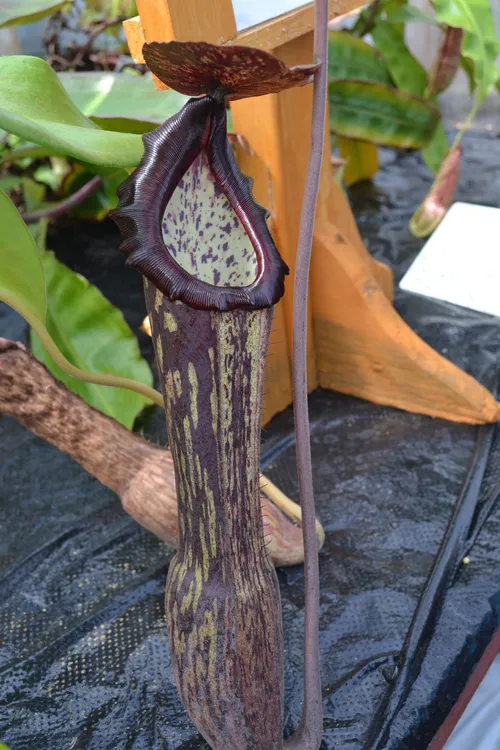 07. Huge elongated pitchers on Nepenthes boschiana
07. Huge elongated pitchers on Nepenthes boschiana 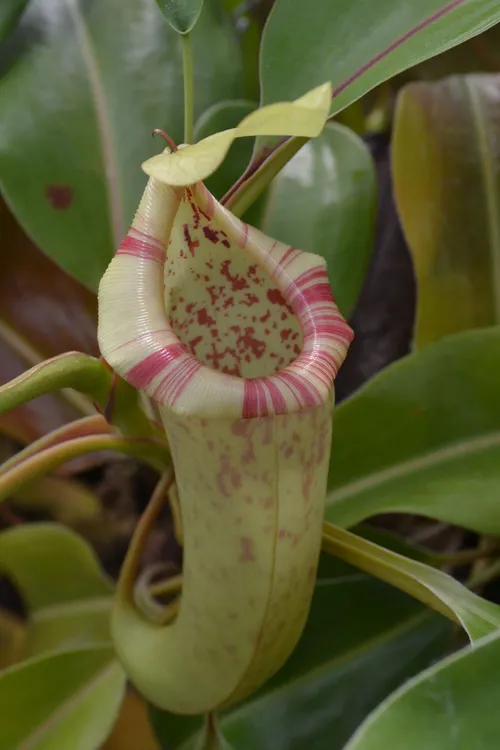 08. Nepenthes boschiana upper pitcher
08. Nepenthes boschiana upper pitcher 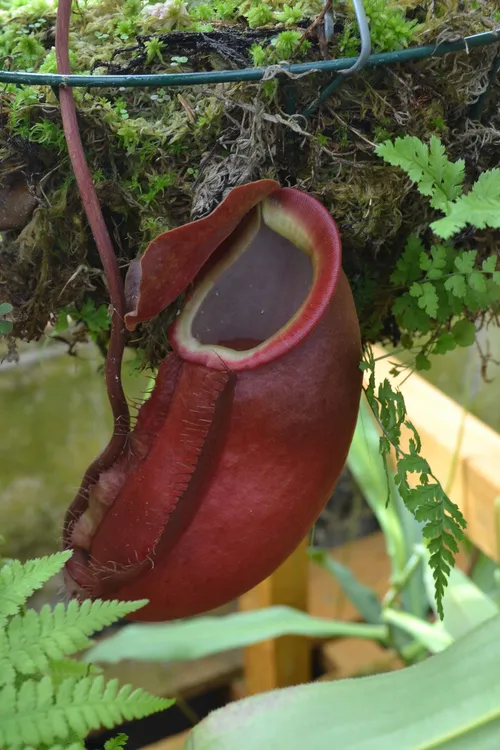 09. Nepenthes bokorensis
09. Nepenthes bokorensis  10. A young Nepenthes campanulata
10. A young Nepenthes campanulata 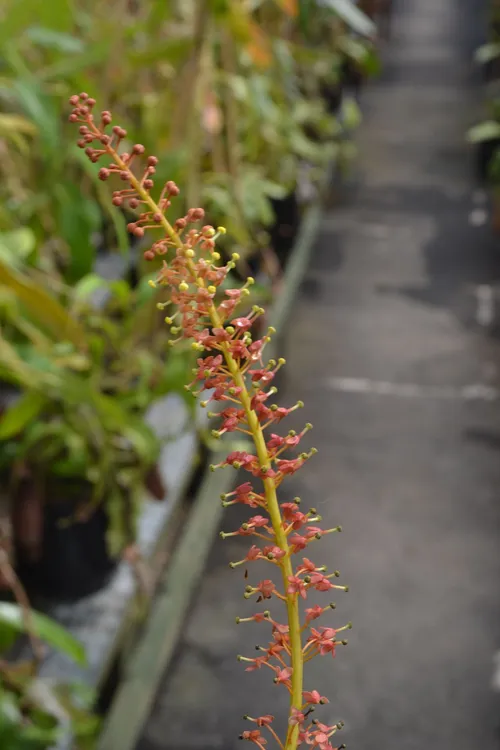 11. As in the highland house, dozens of plants were flowering at once. Given the sheer size of the collection, only very specific plants are prioritized for pollination and seed collection
11. As in the highland house, dozens of plants were flowering at once. Given the sheer size of the collection, only very specific plants are prioritized for pollination and seed collection 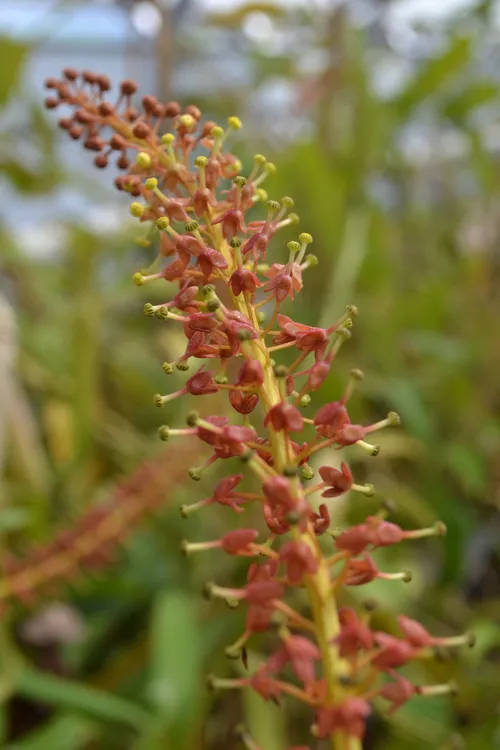 12. Close-up of Nepenthes inflorescence
12. Close-up of Nepenthes inflorescence 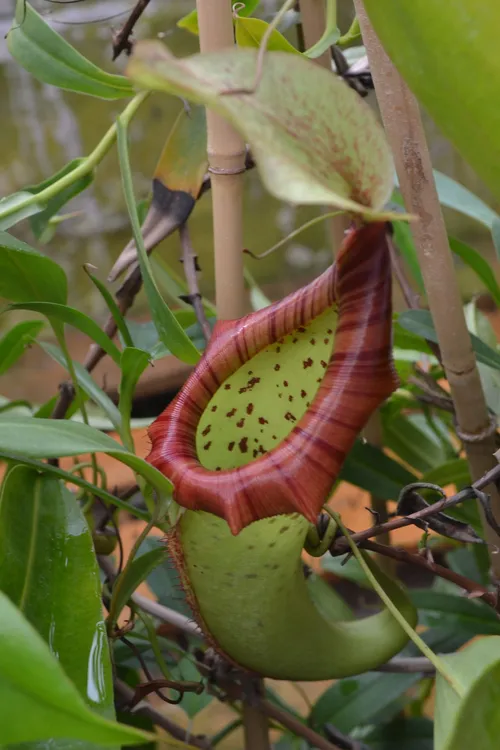 13. Nepenthes x oisoensis - I think this a Japanese cross, it might be N. northiana x maxima but I'm not sure
13. Nepenthes x oisoensis - I think this a Japanese cross, it might be N. northiana x maxima but I'm not sure 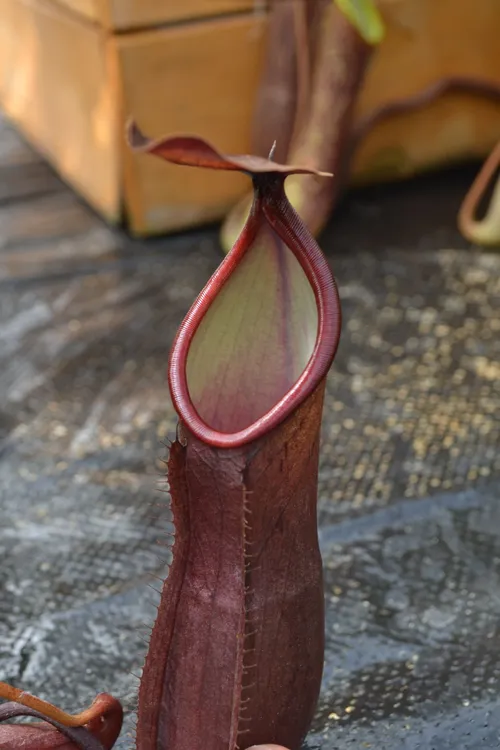 14. Nepenthes thai
14. Nepenthes thai 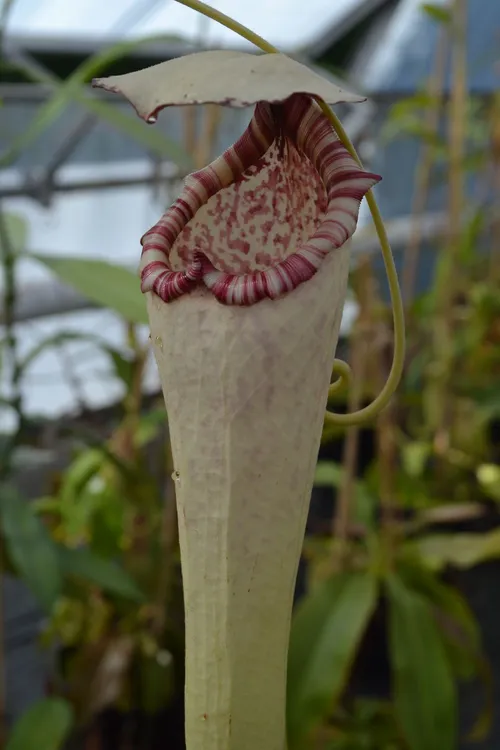 15. An upper pitcher on a different form of Nepenthes boschiana
15. An upper pitcher on a different form of Nepenthes boschiana 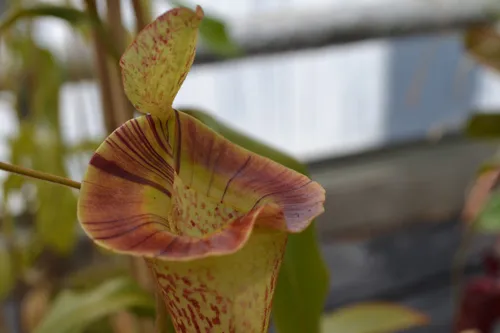 16. Nepenthes platychila upper pitcher displaying wide flared peristome. A beautiful plant!
16. Nepenthes platychila upper pitcher displaying wide flared peristome. A beautiful plant! 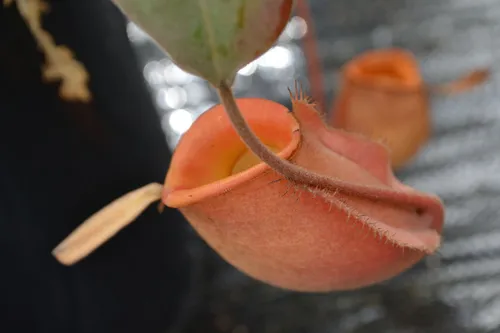 17. I spotted a nice little orange Nepenthes ampullaria down near the floor
17. I spotted a nice little orange Nepenthes ampullaria down near the floor 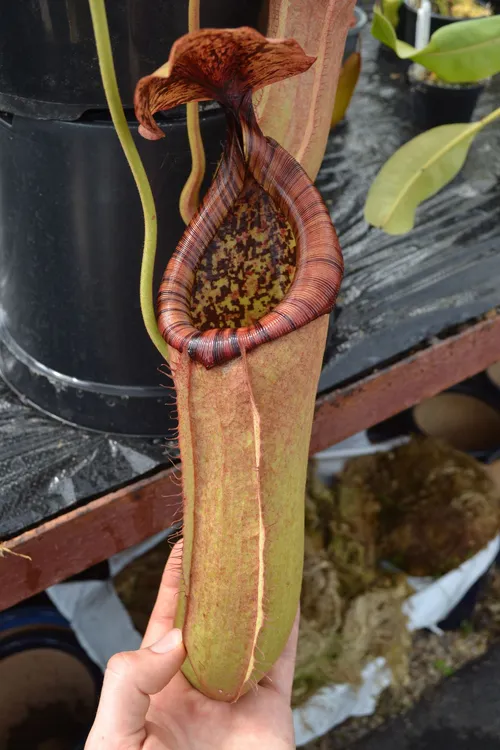 18. Probably the biggest plant I saw during my visit - Nepenthes truncata x merrilliana
18. Probably the biggest plant I saw during my visit - Nepenthes truncata x merrilliana 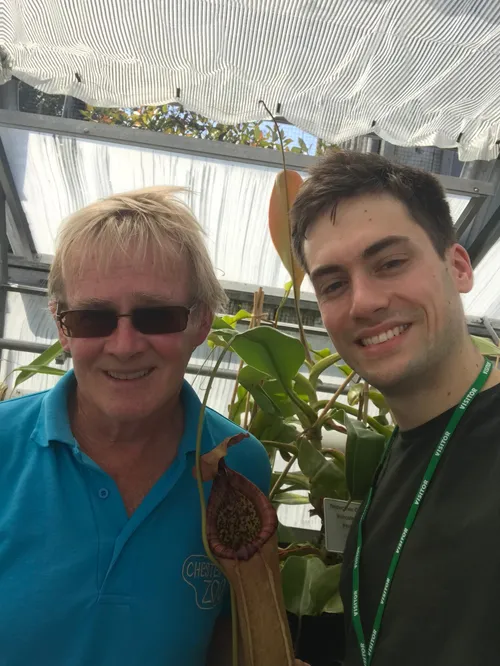 19. Selfie with Paul and Chester's Nepenthes truncata x merrilliana
19. Selfie with Paul and Chester's Nepenthes truncata x merrilliana 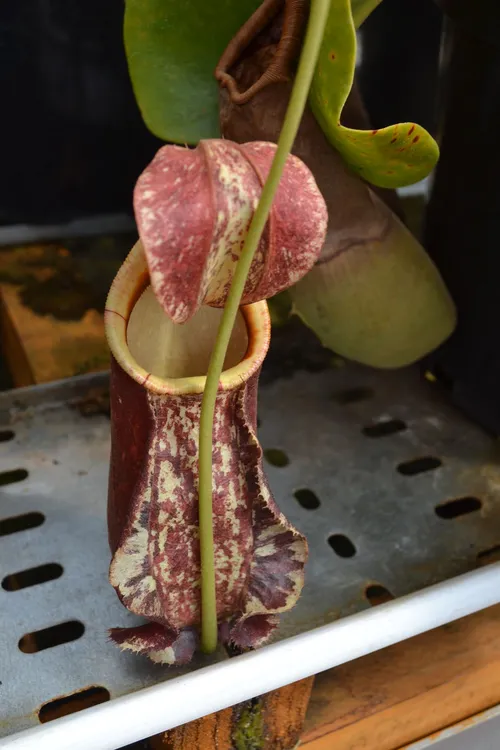 20. Heading into the true lowland house, the first plant I saw was Nepenthes rafflesiana
20. Heading into the true lowland house, the first plant I saw was Nepenthes rafflesiana  21. Nepenthes mirabilis var globosa - I've always loved the shape of this species
21. Nepenthes mirabilis var globosa - I've always loved the shape of this species 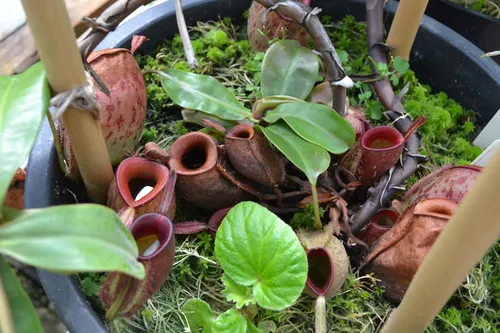 22. Nepenthes ampullaria 'Harlequin'
22. Nepenthes ampullaria 'Harlequin'  23. Nepenthes kampotiana. Chester Zoo has previously sent cuttings of this species back to Thailand to help with a re-population project
23. Nepenthes kampotiana. Chester Zoo has previously sent cuttings of this species back to Thailand to help with a re-population project  24. Nepenthes ampullaria 'Cantleys Red'
24. Nepenthes ampullaria 'Cantleys Red' %20%C3%97%20N.%20mirabilis.%20I%20haven't%20seen%20a%20green%20form%20before.CdiPHdEZ_2i8DrQ.webp) 25. This was labelled as Nepenthes × coccinea, a very old hybrid which was popular with the Victorians - (N. rafflesiana × N. ampullaria) × N. mirabilis. I haven't seen a green form before
25. This was labelled as Nepenthes × coccinea, a very old hybrid which was popular with the Victorians - (N. rafflesiana × N. ampullaria) × N. mirabilis. I haven't seen a green form before  26. The lovely white rim of trichomes on Nepenthes albomarginata, a red form from Gunung Jerai in Peninsular Malaysia
26. The lovely white rim of trichomes on Nepenthes albomarginata, a red form from Gunung Jerai in Peninsular Malaysia 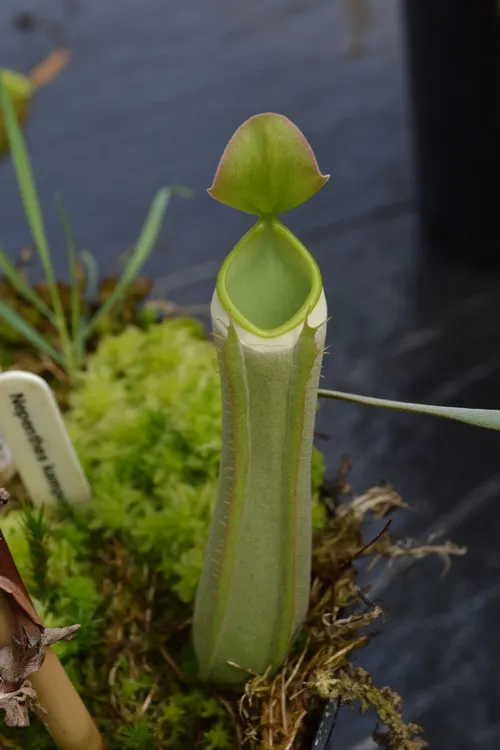 27. A green form of Nepenthes albomarginata
27. A green form of Nepenthes albomarginata Given the number of plants which were at varying stages of flowering, I asked Paul whether he and his team ever propagate from seed. Given the size of the collection and the length of time it takes to raise mature plants from seed, typically only very specific plants are prioritized for pollination and seed collection. “We do hold seed and/or pollen at times, and we are always open to exchanges as long as everything is legally obtained,” he elaborated.
While the Nepenthes glasshouses are not currently accessible to the public, the team have experimented with integrating certain specimens into public areas. This includes a particularly fantastic display overhanging the cliff face in the Monsoon Forest area. Public displays such as these usually involve hybrids, partly to avoid risking individual species, but also because hybrids are more likely to tolerate the occasionally suboptimal conditions found in the animal houses.
“The response to these plants has been amazement and surprise; people do not often see these plants anywhere else,” Paul observed. I also spoke to Phil Esseen, Curator of Botany and Horticulture, who explained that striking and unusual plants like Nepenthes are being tested as a way to combat ‘plant blindness’ - the tendency for visitors to overlook plants completely. While perhaps inevitable to a degree given the setting (many visitors to the zoo arrive with the specific intention of learning about animals) staff are keen to raise awareness of threats to biodiversity and the importance of conservation for all lifeforms, including plants.
During my day at the zoo, I was also treated to a tour of the new outdoor Sarracenia display and orchid house and with Phil Esseen, and of the impressive cacti collection with Lead Horticulturist Jo Adderley. A select handful of my photos are presented below.
Click on any photo to zoom in. Use arrow keys or swipe to navigate.
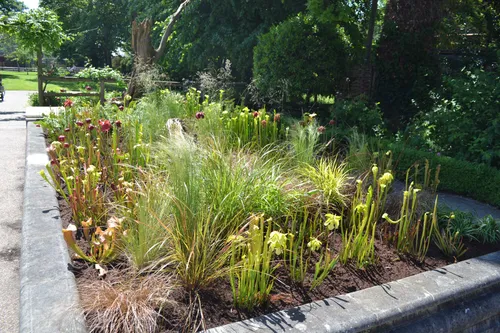 01. The public Sarracenia bed
01. The public Sarracenia bed 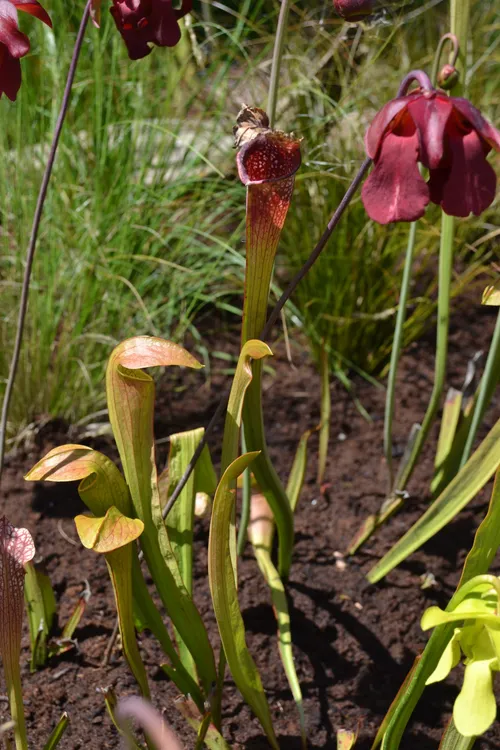 02. Sarracenia jonesii
02. Sarracenia jonesii 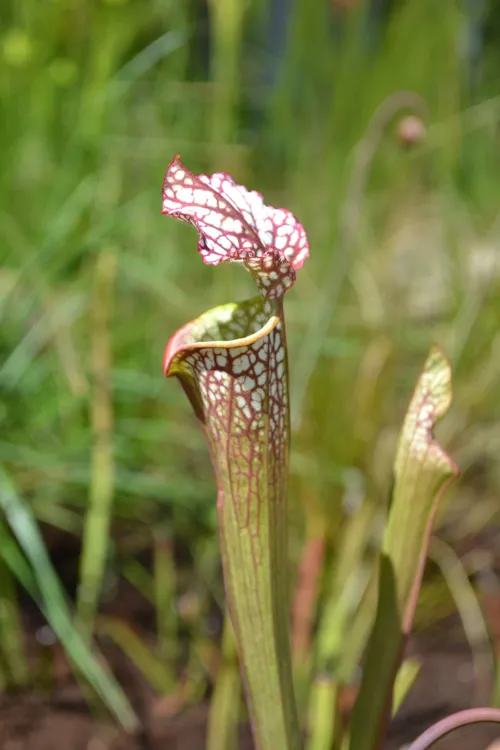 03. Sarracenia leucophylla
03. Sarracenia leucophylla  04. The cacti collection at Chester Zoo
04. The cacti collection at Chester Zoo  05. I'm woefully ignorant about cacti species, but many of the specimens in Chester's collection were beautiful
05. I'm woefully ignorant about cacti species, but many of the specimens in Chester's collection were beautiful 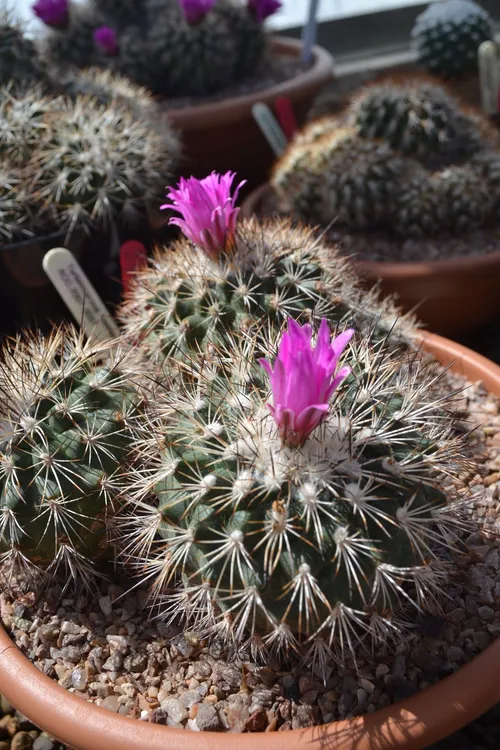 06. Cacti in bloom
06. Cacti in bloom  07. Cacti in bloom
07. Cacti in bloom 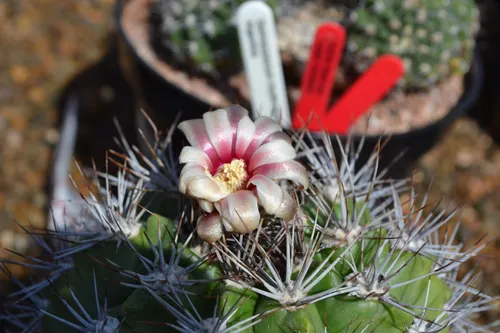 08. Among the many things Jo taught me about cacti - while morphology can often vary wildly between species of the same genus, their flowers are often very similar and can be helpful for identification
08. Among the many things Jo taught me about cacti - while morphology can often vary wildly between species of the same genus, their flowers are often very similar and can be helpful for identification 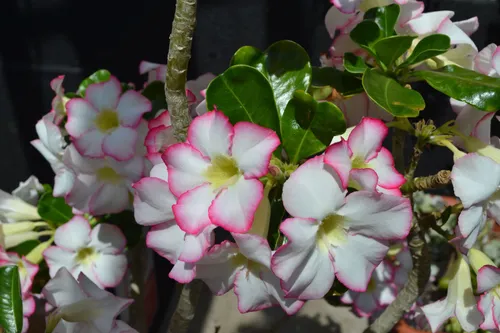 09. Adenium obesum in bloom, from South Africa
09. Adenium obesum in bloom, from South Africa 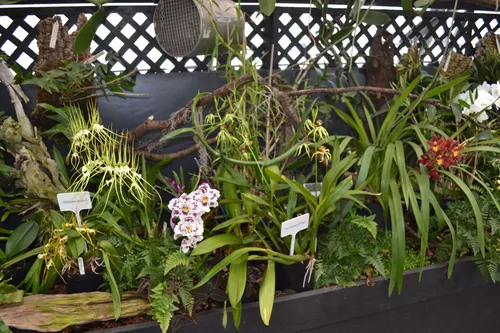 10. The orchid display
10. The orchid display  11. Orchids flowering
11. Orchids flowering 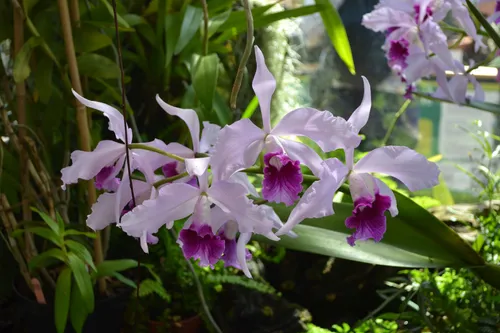 12. My favourite of the orchid flowers I saw
12. My favourite of the orchid flowers I saw Before leaving the zoo I asked Paul if he’d share a few tips for Nepenthes growers. He emphasised that there was no one-size-fits-all solution; the huge number of variables means you shouldn’t be afraid to experiment when looking for an approach which suits you. “The only tip I would offer to all growers is to regularly check your plants, daily if possible - spot problems early and they are easier to deal with.” My Nepenthes grow guide is available here
I’d like to say a huge thanks to Paul, Phil, Richard and Jo for making me feel so welcome and for showing me round the zoo’s incredible collections. If you’d like to learn more about Chester Zoo’s important conservation work, you can visit their website. If you’re a member of the Carnivorous Plant Society, be sure to keep an eye out for Chester Zoo’s next Open Day.
Thanks for reading!


